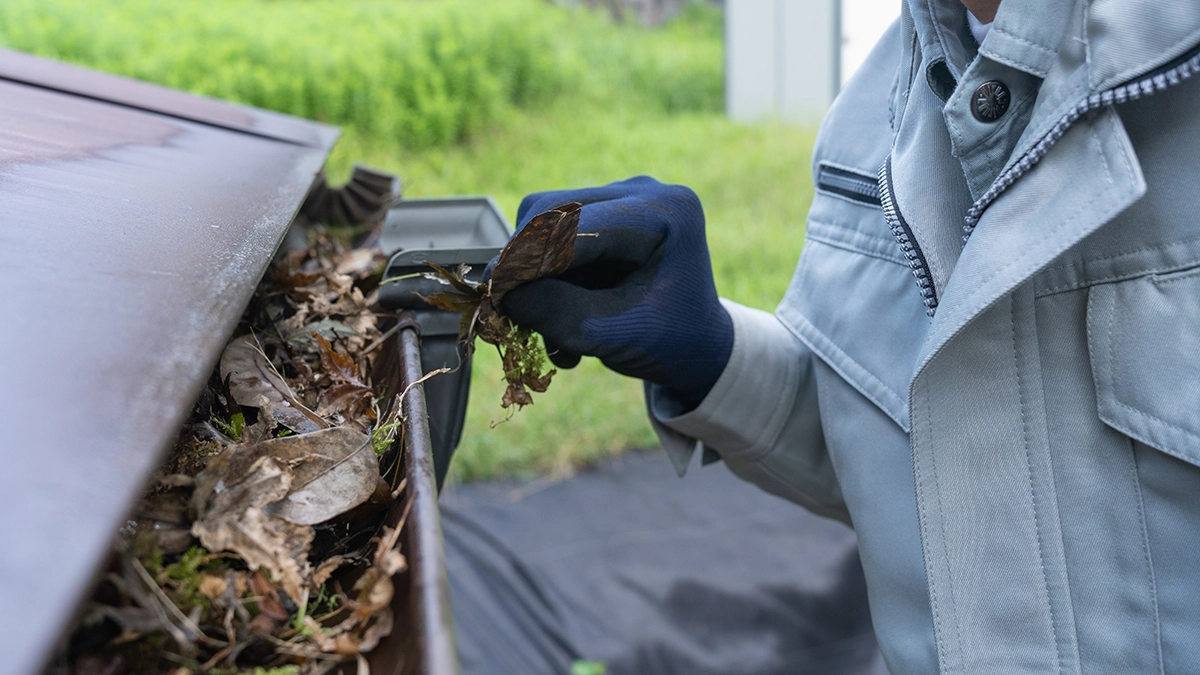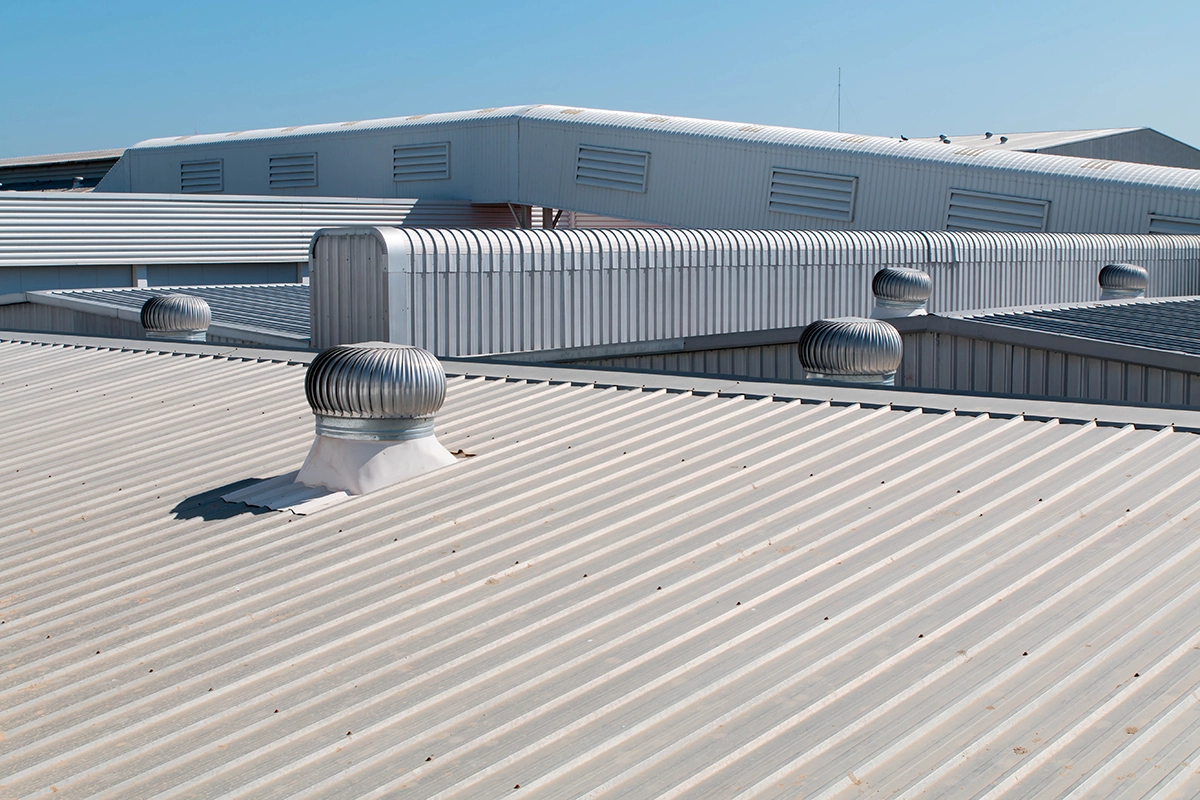The Ultimate Guide to Commercial Roof Maintenance
Your commercial roof is the unsung hero of your building. It shields your inventory, equipment, and employees from the elements, year after year. But like any hardworking hero, it needs regular care to stay in top shape. A proactive approach to commercial roof maintenance extends its lifespan, prevents minor problems from escalating into costly repairs, and protects your valuable assets.
This guide equips you with the knowledge and best practices to ensure your commercial roof receives the care it deserves.
The Power of Prevention: Regular Inspections
The cornerstone of effective commercial roof maintenance is the regular inspection. Ideally, schedule professional inspections twice a year, preferably in the spring and fall. These inspections allow you to catch minor issues before they snowball into major problems. Don’t forget to factor in post-storm inspections after severe weather events like hail, heavy winds, or excessive snowfall.
What to Expect During a Professional Inspection
A qualified roofer will conduct a thorough examination of your roof, typically covering the following:
- Overall condition: The inspector will assess the general state of the roof, looking for signs of wear, tear, or weather damage.
- Problem areas: Cracks, rips, punctures, loose or missing materials will be identified for prompt attention.
- Flashing and seals: Flashing around vents, skylights, and other roof penetrations will be inspected for any deterioration or gaps.
- Drainage system: Gutters and downspouts will be checked for clogs and proper function.
Keeping Things Flowing: Gutter and Drain Maintenance
Proper drainage is essential for roof longevity. Clogged gutters and downspouts can lead to water pooling on the roof, which can cause leaks, weaken the roof structure, and promote mould growth. Here’s how to keep your drainage system flowing freely:
- Schedule regular cleanings: Aim to clean your gutters at least twice a year, more often if your building is surrounded by trees.
- Clear debris: Remove leaves, twigs, and any other debris that might be blocking the flow of water.
- Inspect for damage: Look for cracks, rust, or loose seams in the gutters and downspouts. Address any issues promptly.

The Enemy of Flat Roofs: Ponding Water
Flat or low-slope roofs are particularly susceptible to ponding water – areas where water accumulates and doesn’t drain properly. This can be a major problem, as it can lead to:
- Membrane deterioration: Constant exposure to water can break down the waterproofing membrane of your roof.
- Structural damage: Over time, the weight of the water can put stress on the roof structure.
- Mould growth: Stagnant water creates a breeding ground for mould and mildew.
Here’s how to tackle ponding water:
- Identify the source: Look for dips, low spots, or clogged drains that might be causing the ponding.
- Correct the issue: Address any drainage problems or consider adding scuppers (drainage holes) to disperse the water.
Addressing Problems Promptly: Preventive Roof Repairs
Don’t wait for a minor leak to become a major headache. During inspections, if any issues are identified, it’s crucial to address them promptly. Here’s why:
- Cost-effectiveness: Fixing a small problem is always cheaper than repairing extensive damage later.
- Minimised downtime: A small repair can be done quickly, while a major roof failure can disrupt your business operations for days or even weeks.
- Preserving the roof’s lifespan: By addressing problems early on, you can extend the lifespan of your roof significantly.
Keeping it Clean: Roof Surface Maintenance
While your roof is designed to handle the elements, it can accumulate dirt, debris, and even vegetation over time. This can:
- Trap moisture: Debris can trap moisture against the roof membrane, accelerating its deterioration.
- Block drainage: Leaves and other debris can clog drains and contribute to ponding water.
- Attract pests: A dirty roof can be an attractive habitat for birds and rodents, who can cause further damage.
Here are some tips for keeping your roof clean:
- Schedule regular cleanings: Have your roof professionally cleaned every two to three years, or more often if necessary.
- Remove debris: After storms or periods of heavy wind, remove any branches, leaves, or other debris that may have landed on the roof.
- Be cautious about DIY cleaning: Avoid pressure washing your roof yourself, as it can damage the roofing membrane.
Maintaining Peak Performance: Insulation and Ventilation
Proper insulation and ventilation are crucial for keeping your roof system functioning efficiently. Here’s what you need to know:
- Insulation: Adequate insulation helps regulate the temperature within your building, reducing energy costs and minimising stress on the roof structure.
- Reduced temperature swings: Proper insulation helps maintain a more consistent temperature within the building, reducing the stress caused by constant expansion and contraction of the roof membrane due to extreme temperature fluctuations.
- Improved energy efficiency: By keeping the conditioned air inside and preventing heat transfer in the summer and winter, insulation helps lower your heating and cooling costs.
- Reduced moisture problems: Adequate insulation helps prevent condensation from forming on the underside of the roof deck, which can lead to mould growth and structural damage.
- Ventilation: Proper ventilation helps remove heat and moisture that can build up beneath the roof membrane, preventing premature ageing and promoting a healthier building environment.
Extending the Lifespan: Understanding Your Roof Warranty
Every commercial roof comes with a warranty from the manufacturer. Understanding the terms of your warranty is crucial, as it outlines what is covered and what is not. Here are some key points to consider:
- Warranty coverage: The warranty will typically cover material defects and workmanship issues for a specific period.
- Maintenance requirements: Most warranties require that you perform regular inspections and maintenance to keep the warranty valid. Following these requirements ensures you can utilise the warranty if necessary.
Choosing the Right Roofing Contractor
When it comes to roof maintenance and repairs, choosing a qualified and experienced contractor is paramount. Here are some tips to help you select the right professional:
- License and insurance: Ensure the contractor is licensed and insured to operate in your area.
- Experience: Look for a contractor with experience working on commercial roofs of your specific type and size.
- References: Ask for references and check the contractor’s reputation online.
- Get multiple estimates: Obtain quotes from several contractors before making a decision.
The Benefits of a Proactive Approach
By following the tips outlined in this guide and adopting a proactive approach to commercial roof maintenance, you can reap significant benefits:
- Cost savings: Regular maintenance helps prevent costly repairs down the road.
- Extended roof lifespan: Proper care can significantly extend the lifespan of your roof, saving you money on replacement costs.
- Improved energy efficiency: A well-maintained roof can help regulate building temperatures, reducing your energy consumption.
- Peace of mind: Knowing your roof is in good condition gives you peace of mind and allows you to focus on running your business.
Conclusion
Your commercial roof is a vital investment that protects your property and your business. By implementing a regular maintenance program and addressing any issues promptly, you can ensure your roof performs optimally for years to come.
Remember, a proactive approach is key to maximising the lifespan and performance of your commercial roof system. With proper care, your roof will continue to be the silent guardian of your business, year after year.
For more information on Commercial Roof Maintenance contact Associates Roofing Partnership.
